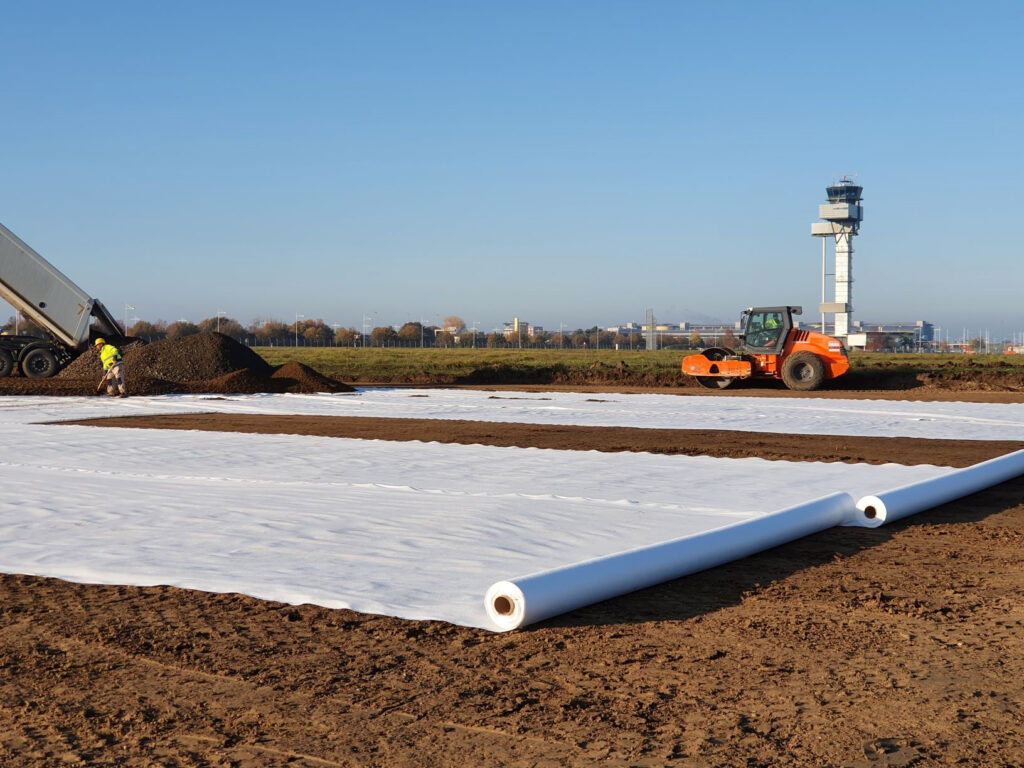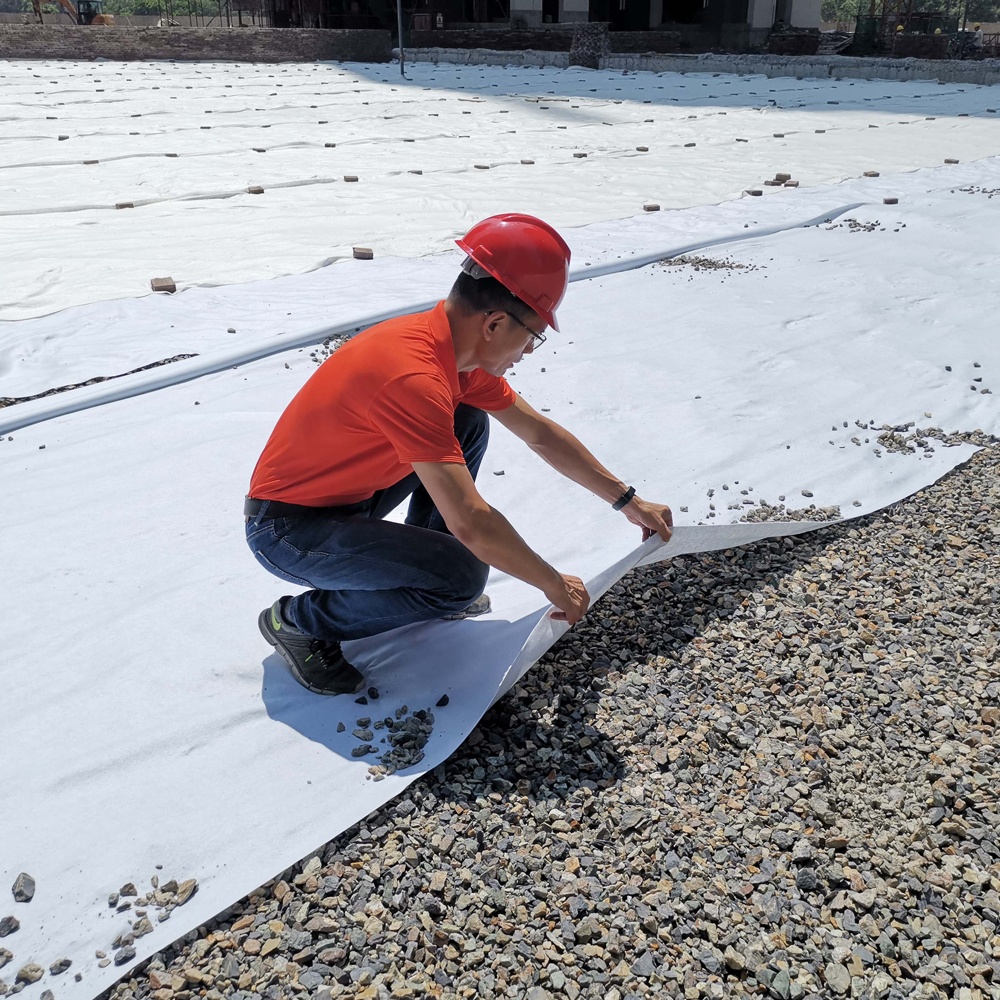What is waterproof geotextile?
Waterproof geotextile is a material used in civil engineering and waterproofing projects. It is usually a non-woven fabric or fabric used to separate, filter, strengthen, protect and separate soil, rocks and other geological materials. Waterproof function. Here is some key information about waterproof geotextiles:
Separation: Waterproof geotextiles prevent different types of soil and underground materials from mixing with each other. It separates different layers of soil, ensuring they do not penetrate each other and maintaining the stability of the engineered structure.
Filtration: Waterproof geotextiles allow moisture to pass through while blocking soil particles from passing through, which helps maintain a balance of moisture in the soil layer while preventing soil erosion and damage.
Strengthening effect: Waterproof geotextile can enhance the stability of soil, especially in earthworks, and can be used to strengthen soil slopes, earth walls and roadbeds. It provides additional strength and reduces soil deformation and settlement.
Protection: In roads, river embankments, rock piles and other projects, waterproof geotextiles can be used to protect soil or rock from erosion, damage or stripping.
Waterproofing: Some types of waterproof geotextiles are waterproof and can be used to construct waterproof layers. This kind of waterproof geotextile is usually used in ponds, reservoirs, river embankments, tunnels and other projects that require waterproofing.
Waterproof geotextiles are generally divided into two main types:
Fabric-type waterproof geotextile: This type of waterproof geotextile is made of fibers that are woven or woven and has certain strength and tensile properties. It is commonly used in reinforcement and protective applications, as well as in certain projects where tensile strength is required.
Non-woven waterproof geotextile: Non-woven waterproof geotextile is made of fibers through melting, bonding or needling processes, and usually has good filtration and separation properties. This type of waterproof geotextile is suitable for filtering and preventing particle penetration, as well as for separation and reinforcement.
Selecting the appropriate type of waterproof geotextile depends on the specific project needs. When used, waterproof geotextiles need to be properly installed and maintained by following the manufacturer’s recommendations to ensure the durability and performance of the project.

What is gravel geotextile?
Gravel geotextile is a special type of geotextile commonly used in civil engineering, particularly in applications involving gravel or similar granular materials. Its main purpose is to provide separation, filtration, reinforcement and protection between gravel or granular material and soil.
The following are the main functions of gravel geotextile:
Separation effect: Gravel geotextile can effectively separate different types of materials, such as gravel and soil, preventing them from mixing together. This helps maintain the stability of the engineered structure and prevents different layers of materials from interpenetrating and mixing.
Filtration: It allows moisture to pass through while blocking particulate matter from passing through. This helps maintain a balance of moisture in the soil and gravel layers while preventing soil erosion.
Reinforcement: Gravel geotextiles can also enhance the stability of gravel layers or other granular materials. This is particularly useful in road, railway and other projects to reduce material deformation and settlement.
Protection: It can be used to protect underground structures from erosion or damage by granular materials, ensuring the long-term durability of the project.
Gravel geotextiles are typically made from durable synthetic materials like polypropylene or polyester that offer excellent chemical resistance and tensile strength. These properties make it very useful in projects involving granular materials such as gravel, sand, gravel, etc.

How much does geotextile cost?
The price of geotextiles will be affected by multiple factors, including material type, size, thickness, quality, etc. In addition, market supply and demand conditions, geographical location and suppliers will also have an impact on prices. Here are some general guidelines, but please note that specific prices may vary:
Material type: Geotextiles can be different types of synthetic materials, such as polypropylene (PP) or polyester (PET). Different types of geotextiles have different performance characteristics and different prices.
Size and Thickness: Geotextiles are typically sold in rolls, and their price will be affected by width and length. Thickness also affects price and is usually measured in grams per square meter (gsm) or units of thickness.
Quality: The quality of geotextiles varies by supplier and product brand. High-quality geotextiles generally have better performance, but are also more expensive.
Market supply and demand: Market supply and demand have an important impact on prices. When demand is high, prices may rise, and when demand is low, prices may fall.
Geographic location: Geotextile prices may vary depending on geographic location. Transportation costs, regional market competition and local regulations may affect price levels.
Suppliers and Brands: Prices will vary between suppliers and brands. Some well-known brands may offer higher quality products, but the prices are usually higher.

